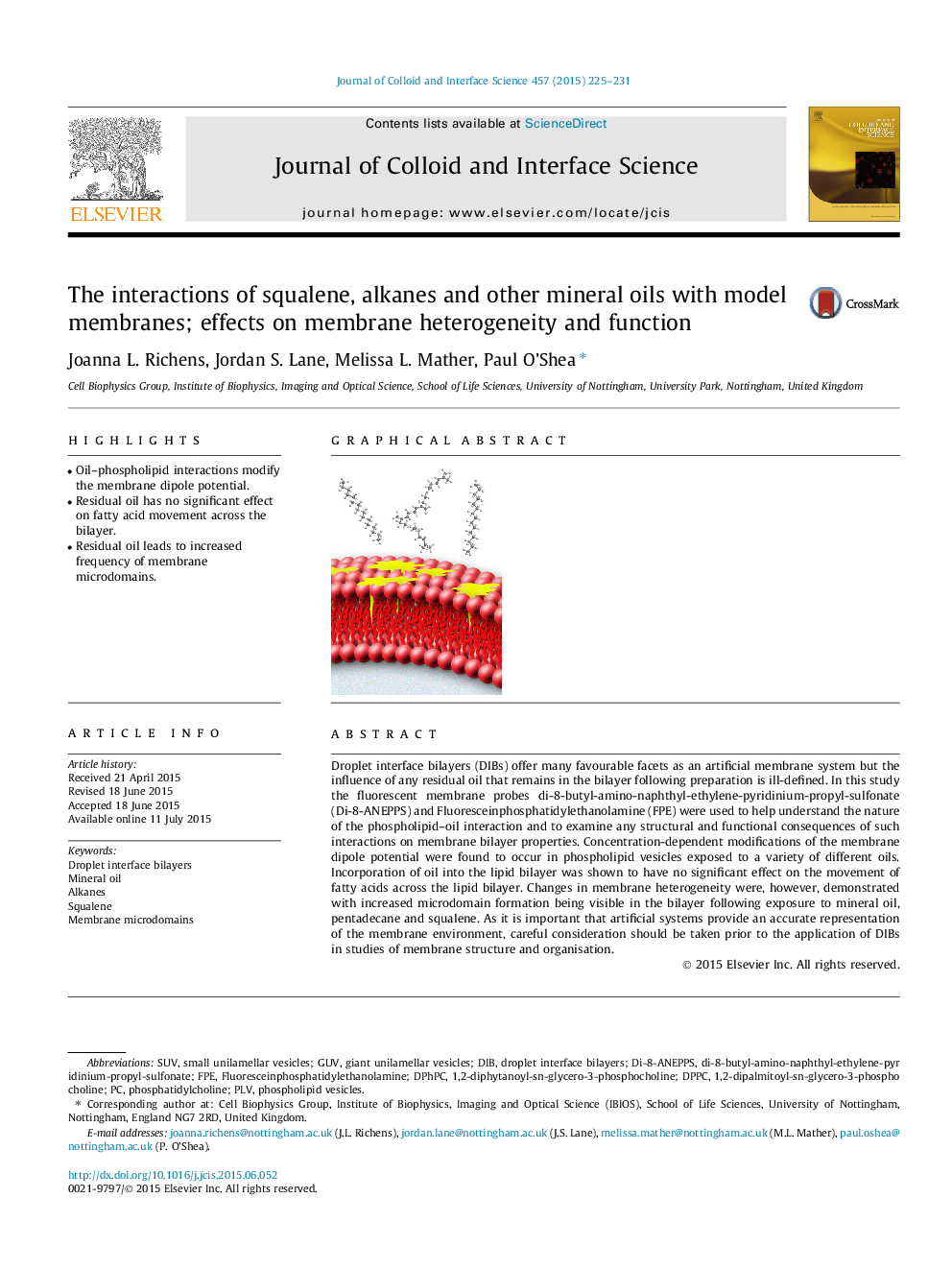| Article ID | Journal | Published Year | Pages | File Type |
|---|---|---|---|---|
| 606647 | Journal of Colloid and Interface Science | 2015 | 7 Pages |
•Oil–phospholipid interactions modify the membrane dipole potential.•Residual oil has no significant effect on fatty acid movement across the bilayer.•Residual oil leads to increased frequency of membrane microdomains.
Droplet interface bilayers (DIBs) offer many favourable facets as an artificial membrane system but the influence of any residual oil that remains in the bilayer following preparation is ill-defined. In this study the fluorescent membrane probes di-8-butyl-amino-naphthyl-ethylene-pyridinium-propyl-sulfonate (Di-8-ANEPPS) and Fluoresceinphosphatidylethanolamine (FPE) were used to help understand the nature of the phospholipid–oil interaction and to examine any structural and functional consequences of such interactions on membrane bilayer properties. Concentration-dependent modifications of the membrane dipole potential were found to occur in phospholipid vesicles exposed to a variety of different oils. Incorporation of oil into the lipid bilayer was shown to have no significant effect on the movement of fatty acids across the lipid bilayer. Changes in membrane heterogeneity were, however, demonstrated with increased microdomain formation being visible in the bilayer following exposure to mineral oil, pentadecane and squalene. As it is important that artificial systems provide an accurate representation of the membrane environment, careful consideration should be taken prior to the application of DIBs in studies of membrane structure and organisation.
Graphical abstractFigure optionsDownload full-size imageDownload high-quality image (132 K)Download as PowerPoint slide
